
Enveloped by the towering peaks of the Himalayas, Himachal is a land of breathtaking beauty and ancient mystique, which is often regarded as “Dev Bhoomi” meaning the “adobe of the gods”. Its land is characterized by its captivating allure and enigmatic nature, where the traditional Folk Tales of Himachal persist within the hearts and minds of its people. Himachal is the land of shiva-shakti, the witness of the valor of Pandavas and the untamed beauty of Hidimba among hundreds of divine. There’s barely any place in Himachal that is not associated with gods and its unmatched beauty is a testament to it.
Himachal blessed with a rich cultural heritage and vibrant spiritual tradition clubbed with its scenic beauty attracts tourism from all around the world which is even more than its actual population!
Like India, the Himachal historical narrative has been shaped by the prominence of the three principal deities known as the “Tridev”, comprising Brahma, Vishnu, and Mahesh (Shiva), but alongside the Tridevs the Himachal culture has a spectrum of local deities, whose tales concerning the origins of the indigenous gods, their extraordinary abilities, and their heroic exploits are recounted and safeguarded in myths that establish a cosmic framework for the natural order of the world.
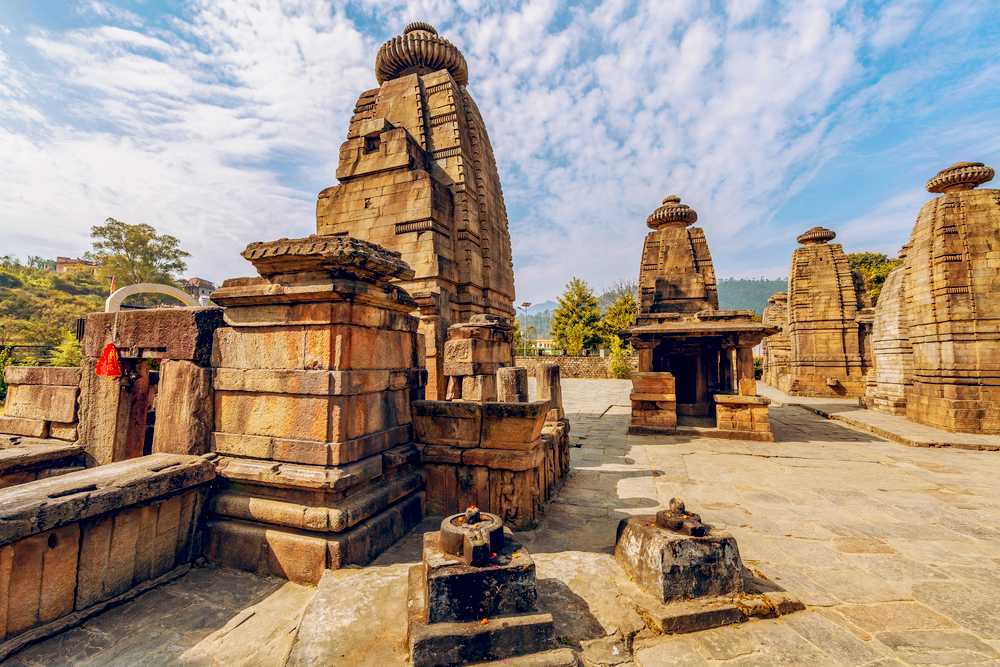
The legend of Bajinath
Speaking of the legend surrounding the Baijnath Temple, it tells another Tale of Himachal- The story of Ravana, the demon king who held a deep devotion to Lord Shiva and aspired to become the ruler of Lanka. To attain his goal, he embarked on a penance dedicated to Lord Shiva, an act of devotion that involved sacrificing his ten heads. Impressed by Ravana’s devotion, Lord Shiva not only bestowed upon him unparalleled power to govern Lanka but also granted him the gift of knowledge and restored his severed heads. Subsequently, Ravana implored Lord Shiva to accompany him to Lanka. In response, Lord Shiva transformed into the form of a Shivling and instructed that the Shiva Linga should only be consecrated upon arrival in Lanka.
However, concerned about the potential consequences of Ravana possessing the sacred Shivalinga, coupled with his newfound powers, Lord Vishnu and Lord Brahma intervened. As Ravana journeyed to Lanka with the Shiva Linga, he encountered strong winds and bitter cold. Seeking assistance, he came across a beggar on a street corner, who was Lord Vishnu in disguise. Ravana requested the beggar to hold the Shiva Linga for him. Once the Linga was in Vishnu’s hands, he promptly placed it on the ground, causing it to become firmly rooted and immovable. It was at this very spot that the Vaidyanath Temple now stands, marking the conclusion of this legendary tale of Himachal. Today, Baijnath or Vaidyanath, an incarnation of Lord Shiva is one of the Jyotirlinga and is believed to remove all sorrows and pains of the devotees.

The land of Shiv-Shakti
The devotion of Shiva-Shakti, or the heavenly couple of Lord Shiva and Goddess Parvati, is another recurring topic in the Folk Tales of Himachal Pradesh. Shiva is revered as the ultimate god of annihilation and regeneration, while Parvati, the wife of Shiva and the mother goddess of strength and procreation together symbolizes the cosmic equilibrium of the male and feminine energy together. The association of lord Shiva to this holy land is manyfold – many Legend has it that Lord Shiva himself performed penance in the caves near Bir, sanctifying the region.
Other beliefs state that the land witnessed the heavenly marriage of lord Shiva and Goddess Parvati. In Himachal Pradesh, Shiva-Shakti is worshipped in numerous other temples and shrines under a variety of names and forms. For instance, one of the most well-known temples dedicated to Goddess Parvati is Jwalamukhi Temple in the Kangra District close to bir , where she is revered as Jwala Ji or Jwala Devi, both of which mean “the flaming goddess.” The temple has a perpetual natural flame that burns without fuel or help. It is stated that when Parvati was consumed by fire after her father insulted Shiva, this flame appeared from her tongue. Another instance is the Manimahesh temple in the Chamba district, where Lord Shiva is revered as Manimahesh or Manimaheswar, which means “the lord with a jewel on his head.” situated close to a glacial lake. Shiva is believed to live here with Parvati on a mountain peak named Kailash2. Numerous pilgrims go to Manimahesh Lake each year to take a holy bath and ask Shiva for his blessings.
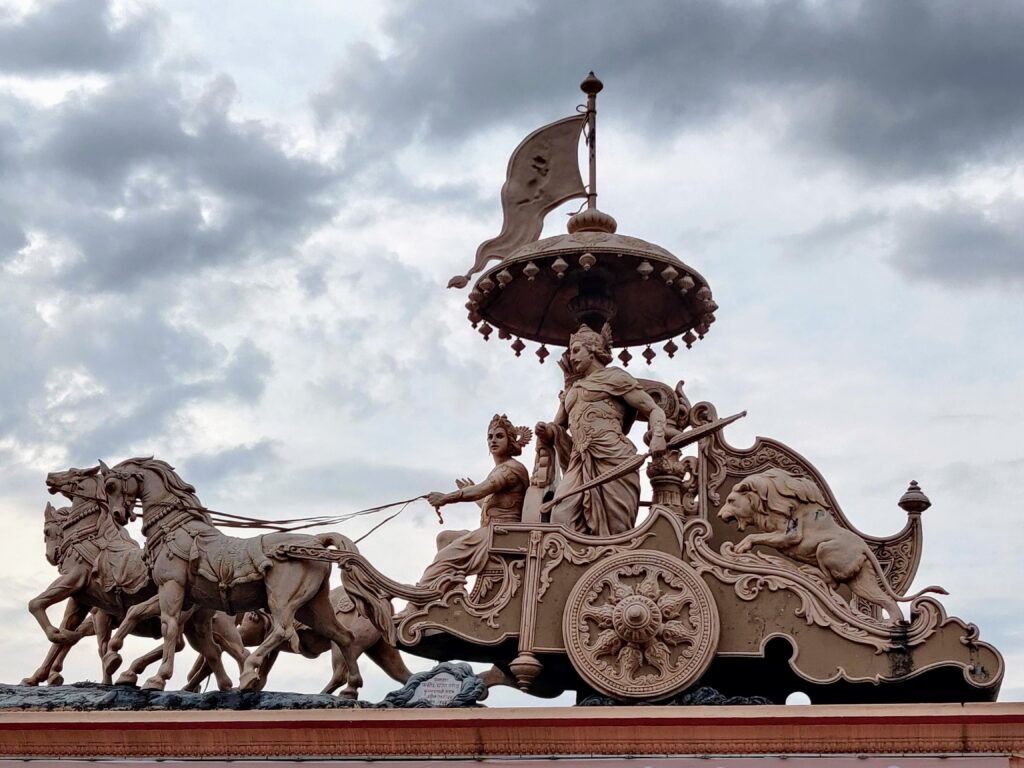
The Five Sons of Pandu
The relationship with the legendary heroes of the Mahabharata, the Pandavas, is one of the most prevalent themes in the folk tales of Himachal Pradesh. The people of Himachal respect and worship the five sons of Pandu who battled against their wicked cousins, the Kauravas, in the famous battle of Kurukshetra. On their exile or heavenly tour, the Pandavas are said to have visited or constructed numerous locations around the state.
For instance, Khajjiar in the Chamba district is renowned for its natural beauty and a small lake with a reed-covered island that floats in the middle of it. The strongest of the Pandavas, Bheem, is believed to have left his footprints on the lake while constructing a wooden temple for the serpent deity known as Khajji Nag Devta. Similar to this, the Pandavas camped out for the night on the Chikni Chattan, also known as the slimy rock, in the Mandi district. They are credited with carving the steps leading to the boulder’s summit.
Rewalsar in the district of Himachal , where there is a lake and three floating islands, is another location associated with the Pandavas. The Pandava archer Arjun is credited with creating this lake by plunging an arrow into the earth to quench his thirst. Due to its associations with Guru Padmasambhava and Guru Gobind Singh, as well, the lake is also considered sacred by Buddhists and Sikhs.
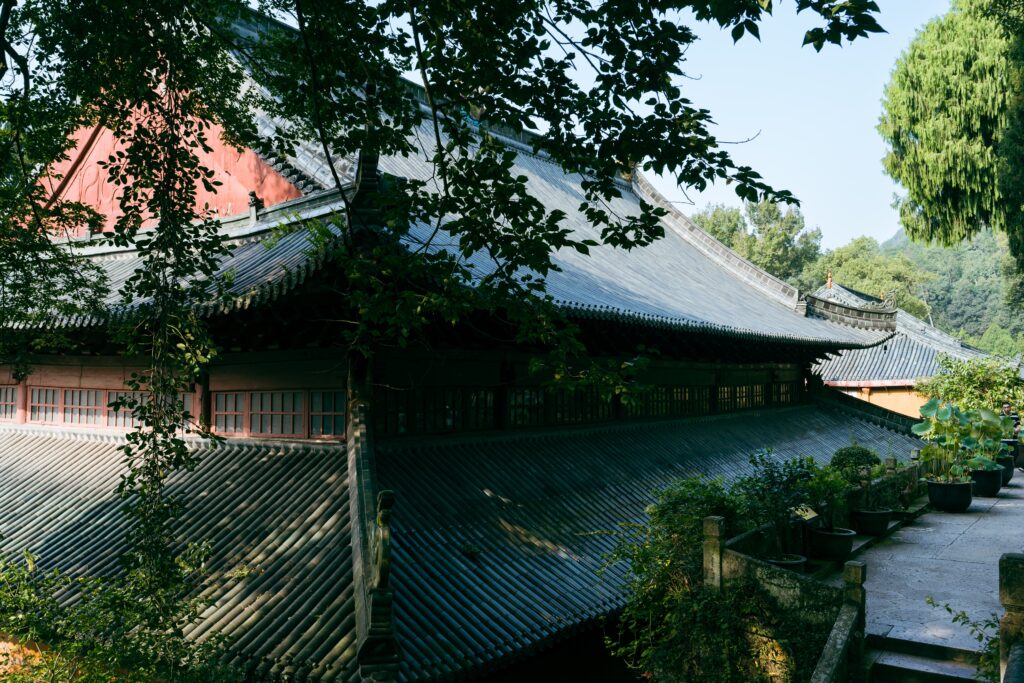
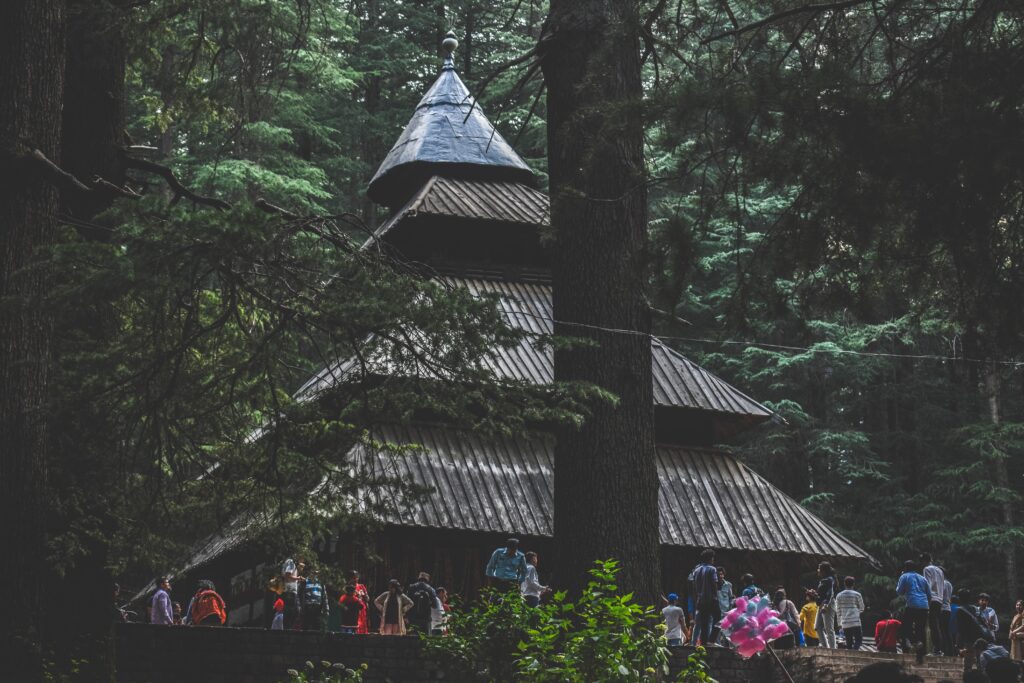
The Untamed Beauty of Hidimba
According to legends, Hidimba Devi, a powerful deity and the wife of Bhima (one of the Pandava brothers from the Mahabharata), resided in the lush forests of Manali is celebrated for her divine presence in the region. The mountain demon Hadimb, who terrorized the villagers nearby, had a sister named Hidimba. He gave his sister the order to slaughter the Pandavas. Hidimba however fell in love with Bhima when she first saw him and refrained from killing him. Instead, she changed into a nymph and went up to Bhima.
Hadimb, feeling betrayed and furious, attempted to murder Bhima. Hadimb lost the battle and was killed. Hidimba and Bhima had a son named Ghatotkacha who was half human and half demon. Ghatotkacha received supernatural abilities from both his mother and father, including the ability to fly and wield magic. He put up a brave fight in the battle of Kurukshetra, but Karna ultimately killed him. When Ghatotkacha reached adulthood, Hidimba allegedly observed penance in Dhungri. She was attentive and kind, and she made good use of her mystical powers. Following her demise, her followers and the local ruler built a temple in her honor.
Doongri festival is also celebrated for Hidimba Devi on Vasant Panchami, which falls in February during the height of nature’s bloom, which also happens to be Hidimba Devi’s birthday. The native ladies of the Doongri forest region perform dances and musical celebrations as part of this event.
Hidimba Fair – The Hidimba Fair stands as a testament to the rich cultural heritage and spiritual fervor of Himachal Pradesh. It brings together people from diverse backgrounds to celebrate tradition, devotion, and unity. As the chariots of deities roll through the quaint streets of Himachal, the air is filled with a sense of spirituality and festivity that is truly unique to this region.
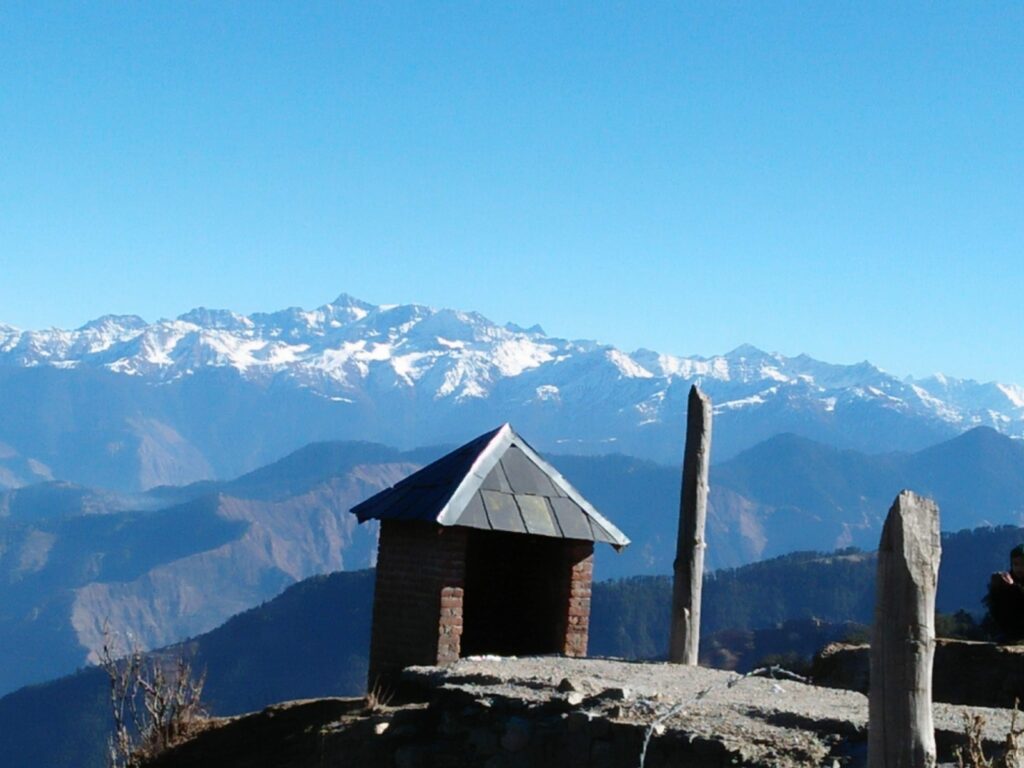
Other Indigenous Deities
Himachal Pradesh also has a rich heritage of regional deities or devas, who are revered as watchmen and protectors of villages, clans, or regions, in addition to epic heroes and supreme gods. During festivals, wooden or metal idols or masks that are preserved in temples or carried in processions typically serve as these devtas’ representations. They are thought to possess supernatural abilities and have the ability to affect various aspects of nature, including rain, snow, harvests, diseases, etc.
Hadimba Devi in the Kullu district, Chamba Devi in the Chamba district, Shirgul Devta in the Sirmaur district, and Narsingh Devta in the Shimla district are a few instances of regional deities in Himachal Pradesh. These deities have myths and legends that describe their background, traits, and deeds. For instance, The Kullu Valley’s patron deity, Hadimba Devi, is venerated for her fortitude and bravery.
Another example is Chamba Devi, the daughter of Meru, the ruler of the mountains. Raja Sahil Varman, the one who founded Chamba town, was her husband. She was incredibly devout to Lord Shiva and religious. She once went to a cave close to the Ravi River to practice meditation. She was meditating so intently that she was unaware that a snake had wrapped itself around her neck. When her husband visited her, he was astonished and attempted to get rid of the snake. But when the snake bit him, he passed away. Chamba Devi, who was devastated, cursed the snake to turn it into stone. She then set herself on fire on her husband’s funeral pyre. She is revered as the town goddess of Chamba and is thought to bestow blessings to her followers.
Himachal Pradesh’s mythology is a captivating amalgamation of divine beings, epic tales, and a profound affinity for nature. It serves as a cultural compass, guiding the beliefs, traditions, and values of the people who call this enchanting region home. This rich tapestry of mythology continues to shape the identity of Himachal Pradesh, making it not just a land of natural beauty but also a repository of timeless legends and spiritual connections.
What are the prominent deities and myths associated with Himachal Pradesh’s rich cultural heritage?
Himachal Pradesh is closely connected to deities like Lord Shiva, Goddess Parvati, and a myriad of regional gods. These deities and their corresponding myths form the cornerstone of the state’s rich cultural heritage, contributing to the Tales of Himachal.How did Ravana’s devotion to Lord Shiva lead to the creation of the Baijnath Temple in Himachal Pradesh?
Ravana’s unwavering devotion to Lord Shiva and the captivating tale of his journey with the sacred Shiva Linga resulted in the establishment of the Baijnath Temple in Himachal Pradesh. This remarkable myth has become an integral part of the Tales of Himachal.What is the significance of the worship of Shiva-Shakti in the folklore of Himachal Pradesh?
In Himachal Pradesh, the worship of Shiva-Shakti represents the harmonious balance of masculine and feminine energies. These divine connections are intricately woven into the Tales of Himachal.How do the Pandavas from the Mahabharata epic connect with the landscape and legends of Himachal?
The Pandavas, renowned figures from the Mahabharata, have left their imprint on Himachal’s landscape. Their tales, temple constructions, and associations with places like Khajjiar and Rewalsar are woven into the local legends, adding depth to the Tales of Himachal.Who is Hidimba Devi, and what is the story behind the Hidimba Fair celebrated in Himachal Pradesh?
Hidimba Devi, a powerful deity and the wife of Bhima, is celebrated for her divine presence in the lush forests of Manali. The story of her love for Bhima and the Hidimba Fair, celebrated on her birthday, are an essential part of Himachal Pradesh’s cultural heritage, making up the Tales of Himachal.Who are some of the regional deities in Himachal Pradesh, and what are their unique myths and legends?
Himachal Pradesh is home to a diverse array of regional deities, including Hadimba Devi, Chamba Devi, Shirgul Devta, and Narsingh Devta, each with their own compelling myths and roles as protectors and guardians. These deities and their legends are integral to the Tales of Himachal.How has mythology shaped the cultural identity of Himachal Pradesh, and what impact does it have on the region’s people and traditions?
Mythology, through its tales and legends, continues to shape the cultural identity of Himachal Pradesh, influencing the beliefs, traditions, and values of its people. These enduring narratives and spiritual connections are an integral part of the Tales of Himachal.

